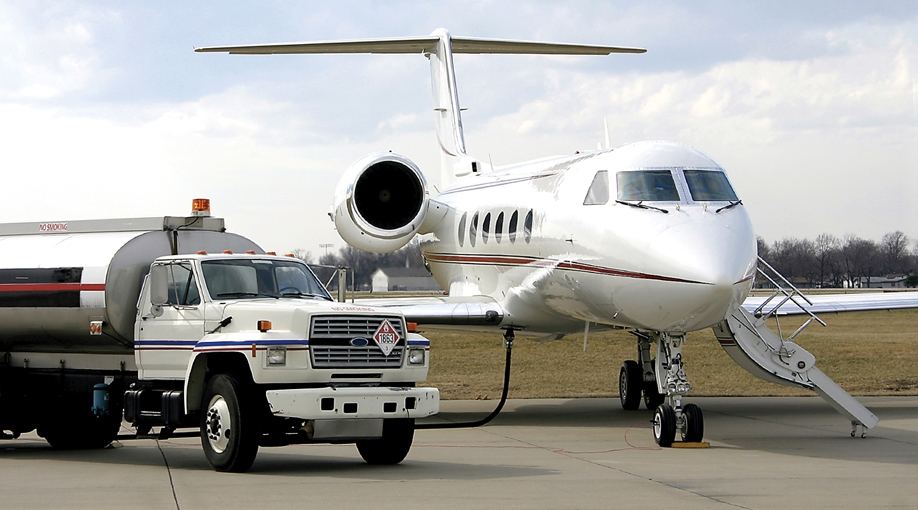
While fuel costs at FBOs have been rising during the last decade, your flight crew’s been working hard to manage these costs. That’s understandable, since fuel consumption represents an average of as much as 61% of your per hour flight costs, according to current data compiled by business aircraft consultants Conklin & deDecker.
But fuel sales are the primary source of revenue for the executive aircraft terminal operator, or Fixed Base Operator (FBO), at your origin and destination airports. With business jet flight activity slowly recovering — up less than 2% over last year, according to Aviation Research Group (www.argus.aero) — growth in fuel sales remains slow. That leaves FBOs scrambling to make their numbers. ButFBOs have to make up fuel revenue shortfall somewhere else, to keep the ground services that you need available when you arrive.
“FBO” is a curious term for a building firmly planted in concrete adjacent to several thousand feet of hard-surface runway. Long before the development of today’s support infrastructure, the open grass field nearest the final destination was many a town’s unofficial “airport.” Upon the aircraft’s landing, a local fuel supplier — perhaps a truck from a local gas station — would meet it for refueling, and would turn the occasional wrench as required.
It was 1927 when the first airline “passenger terminal” was built at Ford Airport in Dearborn, Michigan. Other cities began emulating the new Ford facility, with paved runways and passenger terminals for scheduled service. And heretofore journeyman mechanics begin building “fixed” locations, providing both fuel and technical support, and the term “Fixed Base Operation” became the accepted descriptor for such facilities.
Early FBOs were rudimentary, often a lean-to built onto a Quonset hut hangar, with a service counter and Spartan waiting area equipped with second-hand sofas and coffee tables. By the mid-1940s, many single location FBOs like Showalter Aviation in Orlando, FL and Combs Aviation in Denver ramped up their facilities and amenities for pilots and passengers, as well as their focus on “service with a smile” to provide an efficient and comfortable transition point between ground and air transportation.
That model changed dramatically in the early 1960s, as the skies began to fill with turbojets burning 300 gallons per hour. First generation business jets had to buy fuel nearly every time they landed. But most airports had multiple FBOs, and to secure market share, FBOs competed to deliver superior service and made increasing investments in ground facilities. By the 1970s, a dedicated Executive Terminal with separate pilot and passenger lounges, flight planning computers, and personnel trained to deliver safe, high-quality service had become the norm.
With the mid-1970s’ arrival of the next generation fuel-efficient turbofan engine, per-hour fuel consumption was cut by as much as 30%. Now business jets could “tanker” between airports, and buy fuel only at FBOs which provided good service at reasonable prices. That forced most FBOs to invest in better facilities and service, in order to earn larger customer fuel purchases. The alternative was to charge a ground handling “facilities” fee to cover a portion of their fixed operating costs and lease payments, as well as the variable costs to meet and greet each aircraft.
Today you expect to find those improved services and well-appointed executive terminals at most every FBO. But as fuel efficiencies continue to improve, and fuel buying consortia emerge, there is even more pressure placed on FBO per-gallon fuel margins and return on investment. That’s one reason those facilities fees now are the norm — make a minimum fuel purchase, or pay the fee. Recent aviation manager Internet message boards indicate that fees ranging from $700 to $1200 per FBO arrival are common, depending upon the airport location and aircraft size. FBOs offer you convenience, comfort, and safety. But they cannot exist without your support. Fuel or facility fee — or both? The choice is yours. BAA
Business Aviation Advisor's content is presented by experts in all aspects of aircraft management: professionals knowledgeable in operations, legal and regulatory issues, insurance, aircraft finance, human resources, aviation real estate, charter and charter brokers, safety management providers and auditors, and third-party as well as owner aircraft management. These authorities provide Business Aviation Advisor readers with the most current and pertinent information they need to make the most effective and informed decisions about their business aviation investments.




